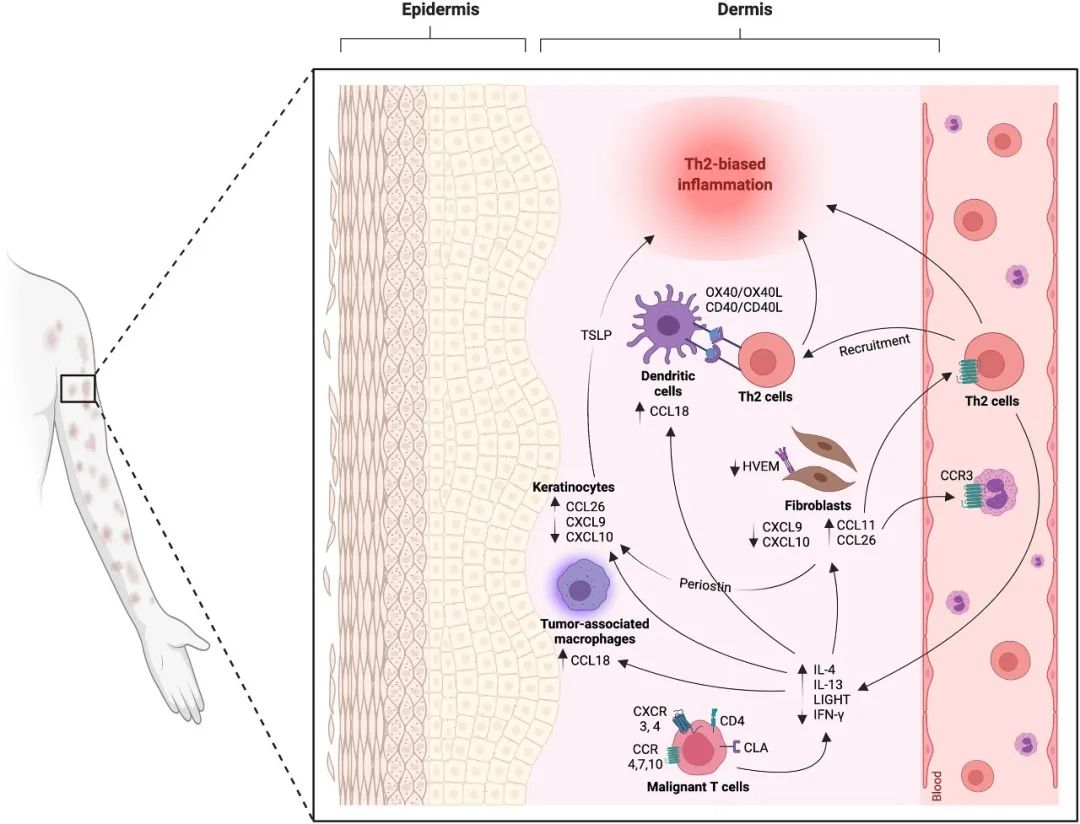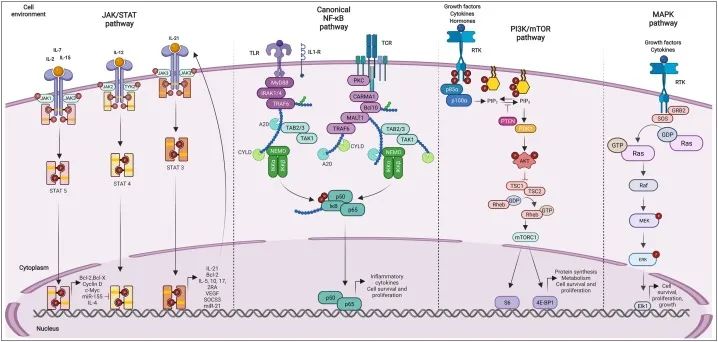

doi: 10.1016/j.semcancer.2021.12.003.
Cutaneous T cell lymphomas (CTCLs) are a heterogeneous group of lymphoproliferative neoplasms, which exhibit a wide spectrum of immune-phenotypical, clinical, and histopathological features. The biology of CTCL is complex and remains elusive. In recent years, the application of next-generation sequencing (NGS) has evolved our understanding of the pathogenetic mechanisms, including genetic aberrations and epigenetic abnormalities that shape the mutational landscape of CTCL and represent one of the important pro-tumorigenic principles in CTCL initiation and progression. Still, identification of the major pathophysiological pathways including genetic and epigenetic components that mediate malignant clonal T cell expansion has not been achieved. This is of prime importance given the role of malignant T cell clones in fostering T helper 2 (Th2)-bias tumor microenvironment and fueling progressive immune dysregulation and tumor cell growth in CTCL patients, manifested by the secretion of Th2-associated cytokines and chemokines. Alterations in malignant cytokine and chemokine expression patterns orchestrate the inflammatory milieu and influence the migration dynamics of malignant clonal T cells. Here, we highlight recent insights about the molecular mechanisms of CTCL pathogenesis, emphasizing the role of cytokines, chemokines, and associated downstream signaling networks in driving immune defects, malignant transformation, and disease progression. In-depth characterization of the CTCL immunophenotype and tumoral microenvironment offers a facile opportunity to expand the therapeutic armamentarium of CTCL, an intractable malignant skin disease with poor prognosis and in dire need of curative treatment approaches.
关键词:Cutaneous T cell lymphoma; chemokines; cytokines; signaling pathways; Sezary syndrome; mycosis fungoides; pathophysiology

